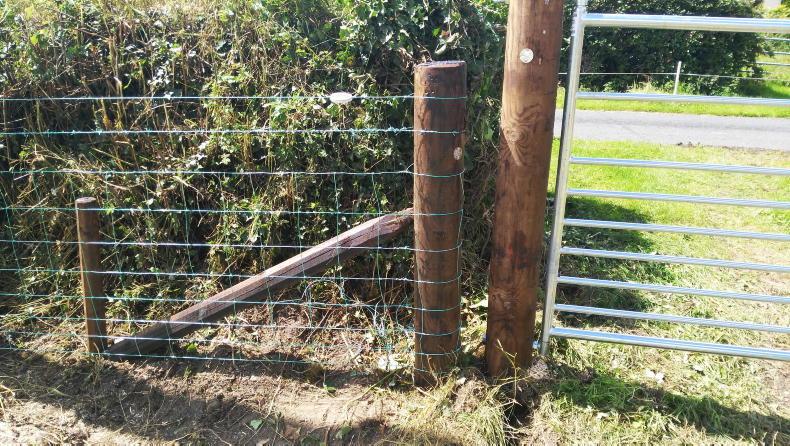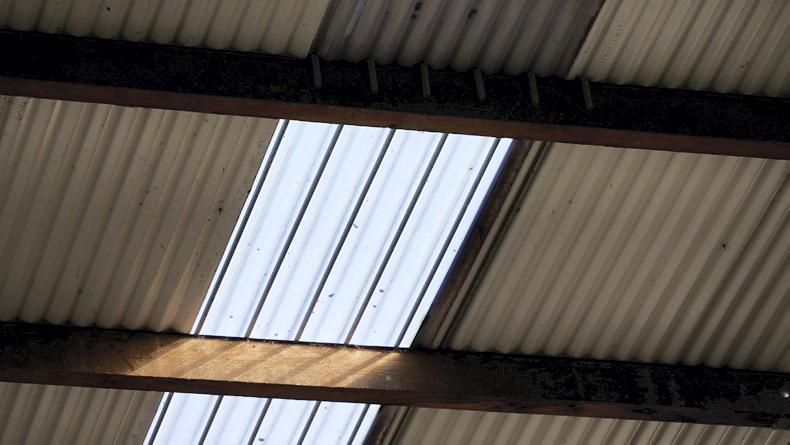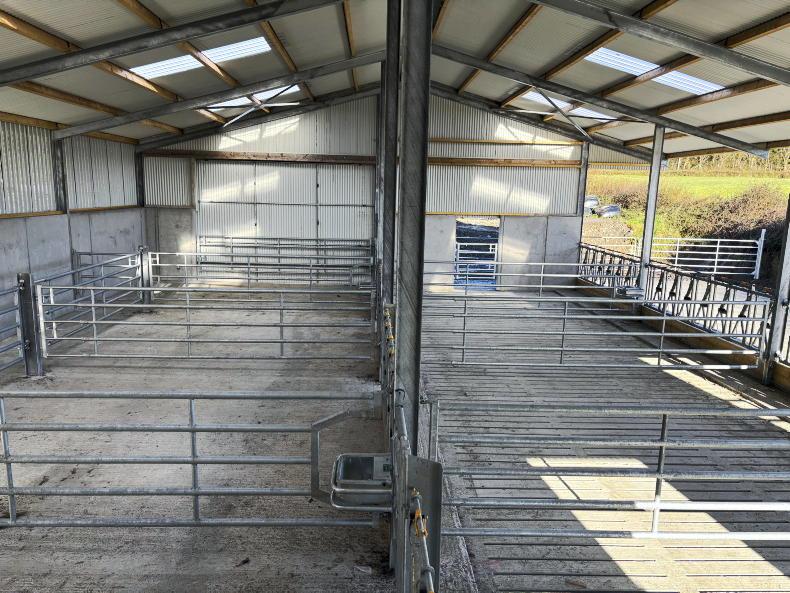There has been keen interest in the recent opening of the Animal Welfare and Nutrient Storage Scheme (AWNSS) entry route of the Targeted Agricultural Modernisation Scheme (TAMS III).
Reports indicate there is a particularly strong interest in bovine electric fencing, which is a new investment in TAMS III.
Bovine electric fencing has a reference cost of €2.77 per linear metre. This cost is the maximum figure on which grant aid will be paid.
The level of grant aid will be paid on the lesser of the reference cost or receipted costs, whichever of these is the lowest.
Gateways are also included as an investment in an electric fence and have been allocated a reference cost of €364.01.
The other related investment is a solar-powered electric fencer, which has a reference cost of €634.
Fencing specifications
The Department of Agriculture confirmed to the Irish Farmers Journal this week that specifications for bovine electric fencing have already been published.
Specifications relating to electric fencing are contained in section F5 of S148 Farm Fencing - August 2019.
The specification states that one or two strands of 2.5mm high-tensile wire should be used, with line wires strained tightly between straining posts.
The top wire shall be 1.1m above ground level and where a second strand of wire is installed, this must be 600mm above ground level.
Strainer posts must be at least 2.1m (7ft) long, with a minimum diameter of 175mm and driven at least 900mm into the ground.
It is required to erect a strainer “at the beginning and end of every length of fencing, at gaps or openings, at every change of direction where the angle is greater than 30° and to accommodate any significant change in gradient”.
The maximum distance between strainer posts in long runs of fencing must not exceed 150m, with the exception of straight, long runs free of undulations (waves or furrows), where the maximum spacing can be increased to a maximum of 500m.
Soft ground
The specifications state that in soft ground, the strainer post may have to be increased to provide the necessary stability.

H-frames can be used instead of strainers in soft ground. They must be erected as per Department of Agriculture specifications detailed in S148-Farm Fencing, (Source: S148 - Farm Fencing).
H-frames or straining frames may be used in place of straining posts where ground conditions prevent strainer posts from being properly placed.
Intermediate posts must be at least 1.8m (6ft) long and a minimum of 100mm in diameter. They must be driven at least 500mm into the ground. The maximum spacing for intermediate posts is 12m intervals.
Gates
The specifications advise that gates must be at least medium-duty type and constructed either of galvanised steel or fully treated timber.
They must be at least 3m wide and 1.9m high. This increases to at least 3.6m wide where gates are used as an entrance gate from a public road.
The exact specifications of the steel and timber gates are detailed in S148 - Farm Fencing.
With regards to steel gates, the specifications state: “Steel gates shall be formed of fully galvanised tubular steel with an outside diameter of33.7x3mm.
"Tubular steel should preferably be bent at each corner and welded to form the frame.
"Alternatively, welded mitred square joints at corner may be used. Gates may be constructed using an infill of rectangular wire mesh or chain link mesh exactly as specified for perimeter fencing per section F.1.1 in S148.
"In this case, the gate shall be diagonally braced [as shown in Figure E1.2 and E1.3], using 32mm tubular steel. Gates may also be formed with an infill of rigid galvanised steel mesh.
"Spaces between the mesh shall not be greater than specified for perimeter fencing.”
Timber gates
For timber gates, the specifications state: “Timber gates shall be formed of treated timbers. Frame and bracing timbers shall be at least 100mm x 38mm. Diagonal bracing shall be as in Figure E1.3 in S148.
"Gates may be constructed using an infill of rectangular wire mesh or chain link mesh exactly as specified for perimeter fencing.
"The gates (with the same bracing) may also be constructed using laths, horizontal timber laths at least 75mm x 25mm with a maximum space of 75mm between the laths.”
There has been keen interest in the recent opening of the Animal Welfare and Nutrient Storage Scheme (AWNSS) entry route of the Targeted Agricultural Modernisation Scheme (TAMS III).
Reports indicate there is a particularly strong interest in bovine electric fencing, which is a new investment in TAMS III.
Bovine electric fencing has a reference cost of €2.77 per linear metre. This cost is the maximum figure on which grant aid will be paid.
The level of grant aid will be paid on the lesser of the reference cost or receipted costs, whichever of these is the lowest.
Gateways are also included as an investment in an electric fence and have been allocated a reference cost of €364.01.
The other related investment is a solar-powered electric fencer, which has a reference cost of €634.
Fencing specifications
The Department of Agriculture confirmed to the Irish Farmers Journal this week that specifications for bovine electric fencing have already been published.
Specifications relating to electric fencing are contained in section F5 of S148 Farm Fencing - August 2019.
The specification states that one or two strands of 2.5mm high-tensile wire should be used, with line wires strained tightly between straining posts.
The top wire shall be 1.1m above ground level and where a second strand of wire is installed, this must be 600mm above ground level.
Strainer posts must be at least 2.1m (7ft) long, with a minimum diameter of 175mm and driven at least 900mm into the ground.
It is required to erect a strainer “at the beginning and end of every length of fencing, at gaps or openings, at every change of direction where the angle is greater than 30° and to accommodate any significant change in gradient”.
The maximum distance between strainer posts in long runs of fencing must not exceed 150m, with the exception of straight, long runs free of undulations (waves or furrows), where the maximum spacing can be increased to a maximum of 500m.
Soft ground
The specifications state that in soft ground, the strainer post may have to be increased to provide the necessary stability.

H-frames can be used instead of strainers in soft ground. They must be erected as per Department of Agriculture specifications detailed in S148-Farm Fencing, (Source: S148 - Farm Fencing).
H-frames or straining frames may be used in place of straining posts where ground conditions prevent strainer posts from being properly placed.
Intermediate posts must be at least 1.8m (6ft) long and a minimum of 100mm in diameter. They must be driven at least 500mm into the ground. The maximum spacing for intermediate posts is 12m intervals.
Gates
The specifications advise that gates must be at least medium-duty type and constructed either of galvanised steel or fully treated timber.
They must be at least 3m wide and 1.9m high. This increases to at least 3.6m wide where gates are used as an entrance gate from a public road.
The exact specifications of the steel and timber gates are detailed in S148 - Farm Fencing.
With regards to steel gates, the specifications state: “Steel gates shall be formed of fully galvanised tubular steel with an outside diameter of33.7x3mm.
"Tubular steel should preferably be bent at each corner and welded to form the frame.
"Alternatively, welded mitred square joints at corner may be used. Gates may be constructed using an infill of rectangular wire mesh or chain link mesh exactly as specified for perimeter fencing per section F.1.1 in S148.
"In this case, the gate shall be diagonally braced [as shown in Figure E1.2 and E1.3], using 32mm tubular steel. Gates may also be formed with an infill of rigid galvanised steel mesh.
"Spaces between the mesh shall not be greater than specified for perimeter fencing.”
Timber gates
For timber gates, the specifications state: “Timber gates shall be formed of treated timbers. Frame and bracing timbers shall be at least 100mm x 38mm. Diagonal bracing shall be as in Figure E1.3 in S148.
"Gates may be constructed using an infill of rectangular wire mesh or chain link mesh exactly as specified for perimeter fencing.
"The gates (with the same bracing) may also be constructed using laths, horizontal timber laths at least 75mm x 25mm with a maximum space of 75mm between the laths.”










SHARING OPTIONS